Today is the first day of spring in Australia, a day we celebrate nationally as Wattle Day. It is the time of the year when some wattles flower producing an abundance of yellow inflorescence. One of the 1,070 wattle species is our floral emblem – the golden wattle (Acacia pycantha). It had to outcompete the more spectacular but geographically limited New South Wales waratah for that mantle and formal recognition.
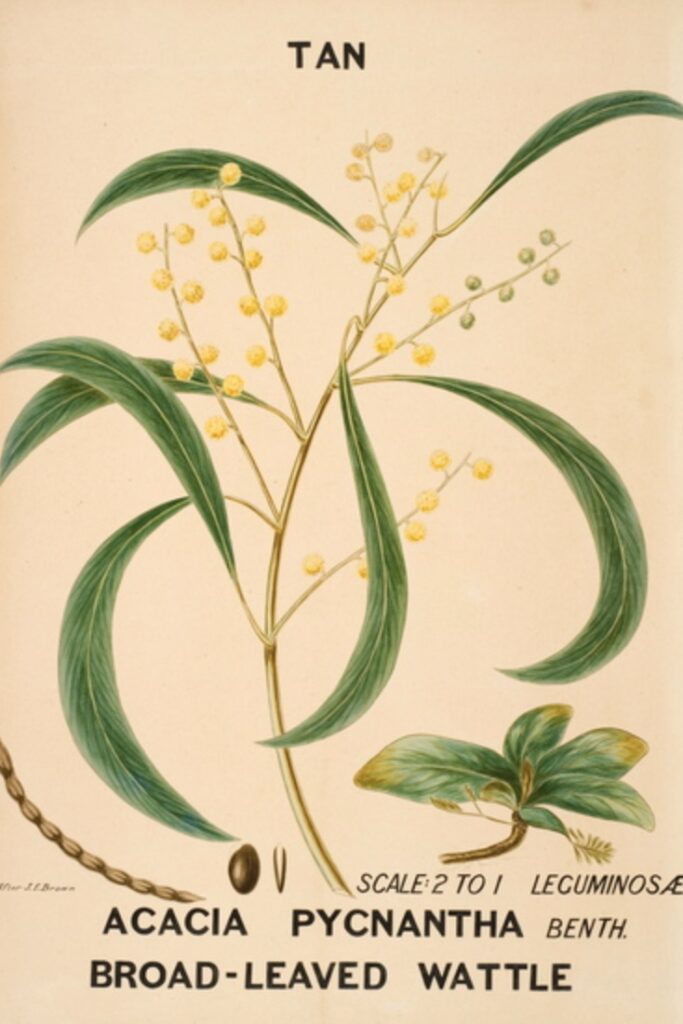
There is no doubt eucalypts are the quintessential Australian plant that has been eloquently used in literature, poetry and paintings to epitomise our unique natural characteristics. But it is at any time of the year a wattle is blooming. It is especially in spring that our bush is covered in yellow from the wattles that gladden the heart.
(Left) The national floral emblem.
Sure, not all wattles have yellow flowers. The flowers of cupid’s wattle (Acacia purpureopetala) are mauve. It is a rare plant that grows on rock shelves in the Stannary Hills west of Herberton in North Queensland. It flourished after those hills were stripped of plants and soil by tin miners in the 1800s. For years the naked rocks blushed mauve until other plants returned, and it is now a rare plant again. Another in south-west Western Australia has white flowers (Acacia gilbertii). In Victoria, two unusual wattles have been found recently – one with red (Acacia leprosa) and the other with brilliant orange (Acacia paradoxa) flowers.
The first recorded use of wattle sprigs to celebrate the foundation of a colony was in Tasmania on 1 December 1838 as part of celebrating 50 years of British settlement. However, it wasn’t until 1910 that Wattle Day was first celebrated in New South Wales, Victoria and South Australia. The main reason for this celebration was to stimulate patriotism for the fledgling nation of Australia, mainly through the school children. It also initiated a program of planting wattles in parks and reserves in those states. The Sydney Morning Herald wrote on that day:
“To many Australians the wattle stands for home, country, kindred, sunshine and love, every instinct that the heart most deeply enshrines”.
During World War I, wattles were linked to patriotism by reminding soldiers fighting overseas of home. It was also a basis for fundraising for cash-strapped community services during the conflict. In addition, it became a unifying symbol of Australia because it displayed the national colours of gold and green and because they grew all over the country.
However, over the years, different states celebrated Wattle Day separately in July, August or September. For example, in Queensland, the day was celebrated in July when silver wattle (Acacia podalyriifolia) was in good bloom.
From the 1930s, the popularity and influence of Wattle Day waned, fading into insignificance. This is surprising as no other plant lifts our spirits as a “company of wattles in bloom”. I have read that wattle’s reputation was associated with death around that time. In the pre-penicillin days, Wattle Day was at the start of the season of death – a portend for diphtheria, whooping cough and other contagious diseases where children died at wattle time. It followed the wattle’s relationship with the experience of war and death a generation earlier.
It wasn’t until 1988, our bicentennial year, the government revived the idea of celebrating wattles as a national symbol. During that year, seven golden wattles were planted in Canberra’s National Botanic Gardens. Then, on 23 June 1992, the Governor-General declared that 1 September each year would be celebrated as National Wattle Day and served to avoid the vexed issue of accommodating different flowering times of wattles in each state.
Because the spring season is associated with green shoots, growth and colourful flowers after winter, the celebration at this time of the year has a more positive slant than other national days of celebration in Australia.
Australia isn’t the only country to celebrate the arrival of spring. In the Northern Hemisphere, particularly in areas that experience severe winters, spring festivals are a big occasion. But the celebration is usually not until after the spring or vernal equinox. And in the Northern Hemisphere, that is associated with Easter celebrations for Christian countries.
In India, they have a Hindu “Festival of Love” or Holi with a focus on an explosion of colours and joy which starts with a bonfire. In Thailand, the country celebrates their national new year by holding the world’s biggest water fight, with loud music and dance parties. Central Asian communities celebrate Nowruz, Persian for new day, and it is the start of a month of festivities. Bulgarians exchange Mertenitsi, red and white twined bracelets and decorations in the lead-up to spring. When they see the first stork in the sky or blossom on a fruit tree, usually around the first day of spring, they take off their Mertenitsi and tie them to the blooming branches. Flowers unfurl with red and white bracelets in gardens and parks across the country. Pagans, druids and other hangers-on dressed in traditional pagan dress gather at Stonehenge in England on the first day of spring for a sunrise ceremony and to celebrate the seasonal shift. And the Bosnians in the town of Zenica celebrate the day by cooking scrambled eggs by gathering around giant pots in public places.
The Holi Festival in India.

Wattles have provided many uses for humans over millennia. Aborigines ate the seeds, used the bark as strings and the tannins and gums for adhesives for their stone tools. Infusing bark in water was also a useful medicinal remedy. Because of the high level of tannins found in the bark of some wattle species, Europeans used them to tan leather. The wattle tanning industry was quite large in Victoria. A thriving industry of wattle bark stripping developed to supply centralised tanning factories. A major government inquiry in 1878 supported the continuation of the fledgling industry. However, the South Africans, who had imported the best wattle seed from Victoria, was able to export the tannin extract to Australia at a more favourable price, outcompeting the locals. Hence the Victorian industry declined.
There have been impacts associated with wattles since European settlement. For example, just as the small rainforest tree sweet pittosporum (Pittosporum undulatum) is now marching into forests where it never grew before, converting sunny woodlands into dark, gloomy groves, some wattles are doing the same.
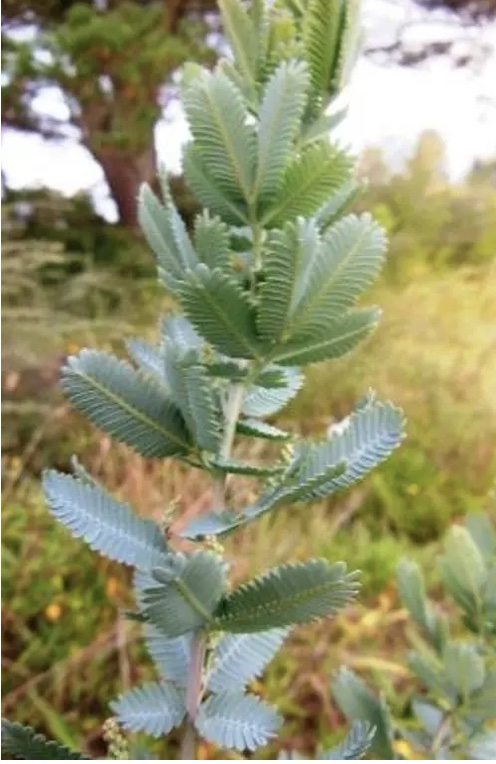
Gardeners are also part of the problem. We now see wattles from eastern Australia growing in the west and vice versa. For example, the Cootamundra wattle (Acacia baileyana), with its feathery, bipinnate silvery-blue phyllodes (which act as leaves), now features prominently in areas outside its originating area around Cootamundra-Wagga Wagga.
(Left) Cootamundra wattle foliage.
It is a fast-growing shrub and a prolific seeder displacing local wattles. Similarly, the Queensland silver wattle (Acacia podalyriifolia), with its silver-grey foliage, is popular and widely cultivated. It is spreading prolifically along Queensland roadsides and is regarded as an environmental weed in other states.
Notwithstanding this, we use today to celebrate a wonderful species that is, with a few exceptions, unique to our landscape. But to professional foresters, a recognition of wattles only reminds us of the deleterious effects of changed land management practices after millions of hectares of actively managed state forests have been converted to reserves since the 1990s. The effects have been compounded by massive wildfires that have occurred over that time.
Wattles are one of the first plants to regenerate after a hot fire. They have seeds with a hard coat which can lie dormant in the ground for many, many years until such time as that hard seed cracks to activate germination. Fire is one of the triggers that will activate or recycle wattle regeneration.
Wattles fix nitrogen in the soil. Their roots contain bacteria that absorb nitrogen from the atmosphere and use it in the plant, which benefits the soil. However, there are consequences when the nutrient balance in the soil gets out of quilter.
Wattles and other nitrogen-fixing plants are mostly shrubs and can grow prolifically after fires. Studies in New South Wales state forests show they respond positively to regular cool burning, with species richness declining shortly after a fire. It explains why, until the end of the 1990s, we saw dry forests with an open understorey with few shrubs.
In the last quarter of a century, however, there has been a dramatic decline in managed cool burns and, combined with an increase in CO2 in the atmosphere, which has acted as a fertilising effect on plant growth, our dry forests now support a dense understory of shrubs.
The increase in nitrogen-fixing shrub density in our forest understory has led to a high accumulation of nitrogen in the soil at the expense of carbon, leading to nutrient imbalances, increased shading and increased topsoil moisture. This, in turn, has affected the health of our eucalypt forests. Pests such as leaf-eating psyllids explode in numbers because of the greater nitrogen related nutrient stocks in the leaves. It triggers a series of complex processes which eventually lead to the declining health of eucalypts.
Some prominent forest ecologists have conducted studies in the past comparing nitrogen levels in frequently burnt and unburnt sites. They mistakenly assumed the long unburnt sites were the norm and used them as controls. Not surprisingly they found that soil nitrogen was less in the frequently burnt sites and thus mistakenly believed that regular burning depleted soil nitrogen.
The explosion in biomass in the forests is a real nuisance because it creates a three-dimensional “ladder” of fuels that extends toward the canopy, which aids in the development of crown fires under severe weather conditions.
The wattle is the main shrub that accumulates in a forest that is not regularly burnt. Unfortunately, the problem is exacerbated after a scorching fire.
Prolific wattle regrowth at Dunns Creek, south of Batemans Bay on the south coast of NSW, three years after the January 2020 fire. Photo Ian Bevege.
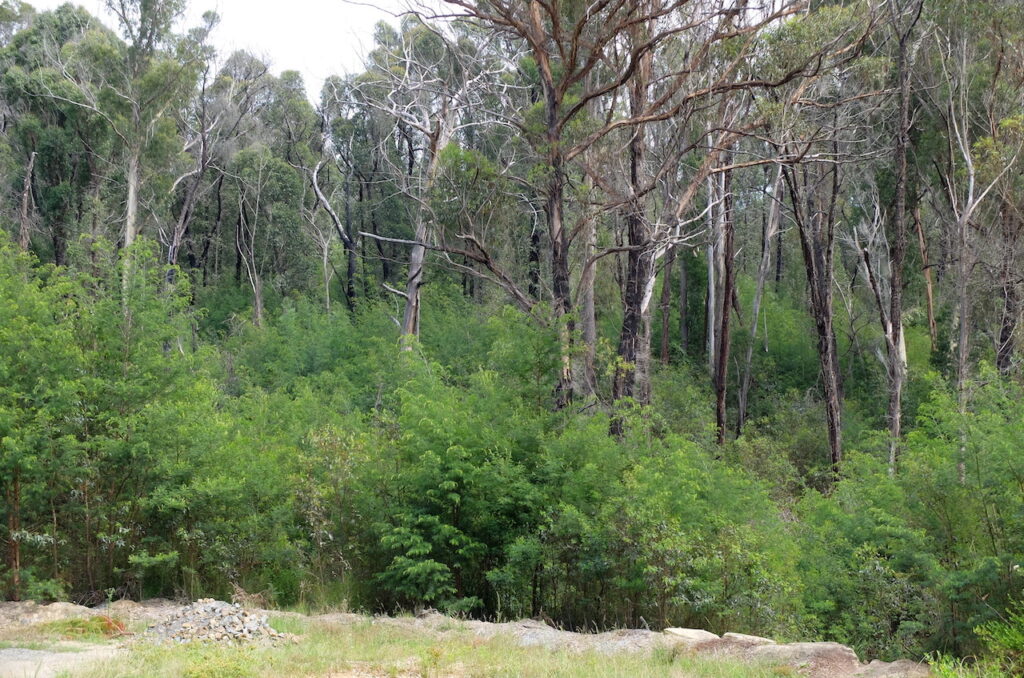
In New South Wales, the 2019-20 fires were very hot which burnt over millions of hectares. Since the fires, we now have a mass of wattle shrubs prolifically regenerating in the recovering forests. For instance, the forests of the south coast of New South Wales are a sea of impenetrable wattle and fireweed shrubs about 5-6 metres in height under a canopy of dead eucalypt trees, just waiting for the next dry summer.
Wattles shed litter and, after flowering, set up a seedbank to perpetuate the cycle after the next hot fire. Unfortunately, we don’t have to wait for a drought to see these recovering forests burn like fury.
In another example, many wattles regenerated in south-west Western Australia after the 1961 Dwellingup fire. According to Western Australian forester Frank Batini, they faced many difficulties carrying out prescribed burns five years after the fires. They would carry out an initial burn to partially kill the wattles and “lay them down”, and soon after, two to three years later, another fire was lit to complete the job.
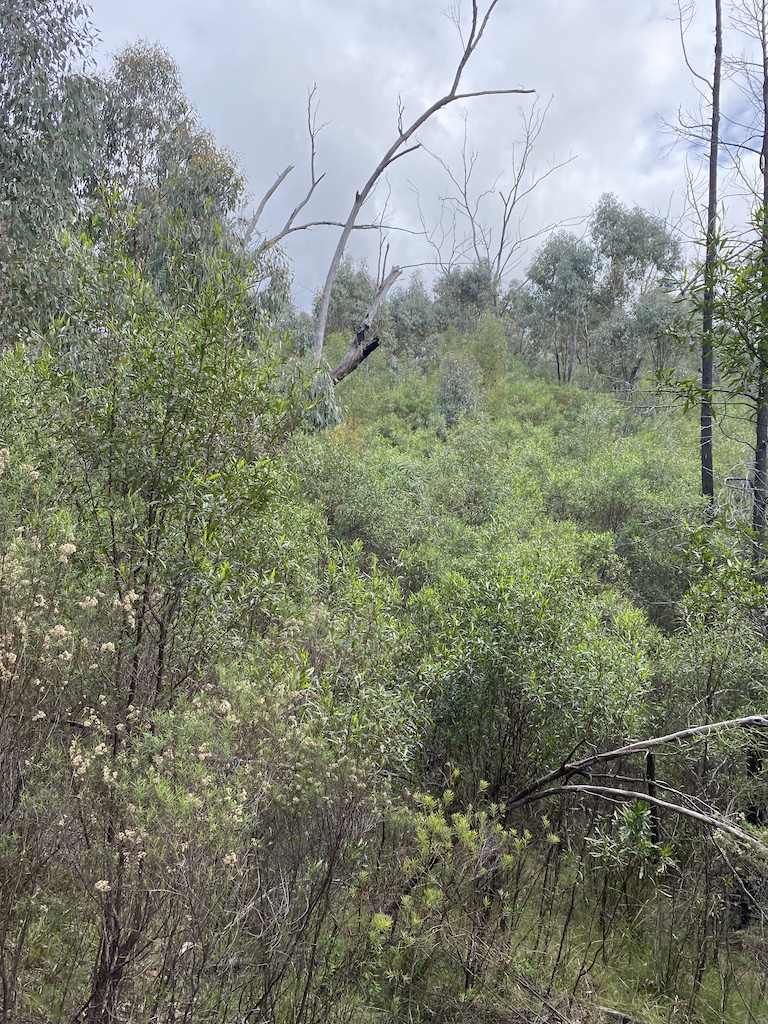
Silver wattle (Acacia dealbata) and black wattle regenerate profusely after a hot fire in Tasmania and eight years after the 2013 Wambelong fire in the Warrumbungle National Park in New South Wales, a sea of wattle regeneration still dominates the park vegetation.
(Left) Wattle regrowth eight years after the 2013 Wambelong fire.
The wattle undergrowth in the Blue Mountains is so great after the latest fierce 2019 fires, experienced bushwalkers are unable to negotiate the overgrown tracks and two of them had to be rescued recently. According to regular bushwalker John Kennett, “the problem was widespread in the Blue Mountains and parts of Wollemi. The scrub has just gone boom”.
After a devastating fire in Pilliga East State Forest in northern New South Wales in the 1980s, silver wattle (Acacia decora) proliferated thickly over thousands of hectares. Then, after five or six years, it added plentiful nitrogen to the mass of carbon on top of the ground. Fortunately, it gave up in this case, and eucalypts and white cypress pine (Callitris glaucophylla) eventually took over.
Farmers across the country during the last century would carry out hot burns on their leases to help them create grazing land. In the Queensland cypress country, which had fewer trees prior to European settlement (but that is another story), farmers saw lots of wattle regeneration. However, it took a while for them to realise that regular mild fires maintained a grassy paddock.
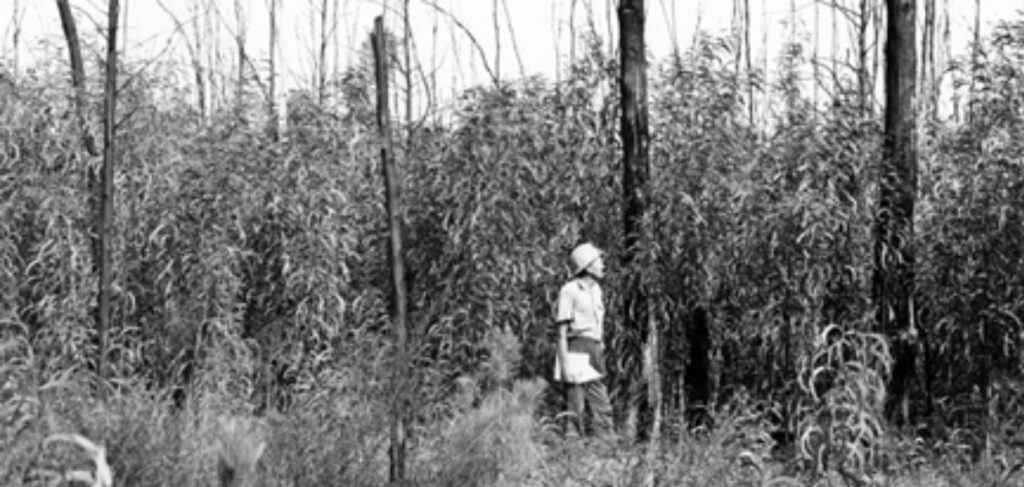
Wattle regrowth three years after 1964 fire at Dunmore, Queensland. Photo Rob Tower.
The ability of Australia’s dominant vegetation – eucalypts, wattles and hakeas – to survive the arid and variable environment and nutrient-poor soils is quite remarkable. However, the big downside to this unique adaptation is their highly flammable nature.
Through volatilisation, intense fires destroy scarce nutrients in the soil, such as nitrogen, sulphur, iodine and selenium, that are essential for animals and plants. Intense fires complement the effects of nutrient poverty by “perpetuating the cycle of accumulation and loss of energy in the form of fuel”. This situation was amplified when the continent’s megafauna died out. They carried out the much-needed nutrient recycling, just like the large mammals currently do in Africa. But their demise was not a good outcome for Australia and led to a blazing continent. It is the principle reason why Aborigines developed their fire stick management of cool burns to deal with the build-up of flammable fuels so they could hunt for food efficiently.
Just like the children of the pre-penicillin era who associated wattles with death, foresters feel the same way. Collectively, we struggle to celebrate Wattle Day while ever our “ecological experts” fail to manage our reserved forests properly and we bear witness to fire holocaust after fire holocaust that is decimating our forests and their rich heritage.
The one fact that is incontrovertible is that no one in the world has solved the problem of avoiding damaging fires in heavy fuels. Humans, despite their ingenious ability to adapt to changing environmental conditions, have failed to generate the same amount of energy needed to deal with a high intensity fire. Our only option is to manage the build-up of fuel to reduce the intensity of fires because our forests are unique. There is no balancing of decomposition and accumulation of litter to create a healthy situation. Flammable fuel accumulates readily. It is made up of leaves, shedding bark and small twigs that builds up on the forest floor for years. Anything over 12 tonnes per hectare can support a raging fire under bad fire weather conditions. Wattles add a new dimension to that build up when they proliferate and persist after a hot fire.
Think about that, and you may finally grasp why foresters are deeply concerned about the lack of management in our forests to reduce the flammable fuel that increases year after year and is made worse after a very high intensity wildfire.
The next time you travel in anywhere in Australia through areas of forest, look closely at the structure of the understory and you will see what I mean.
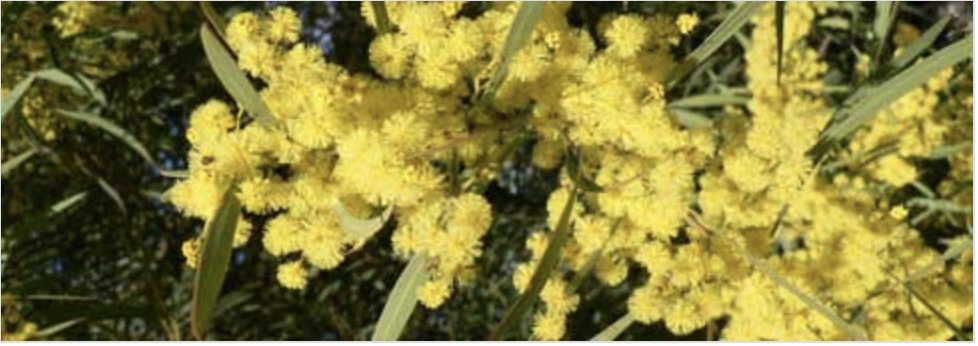
The changes to the western cypress country in Queensland is a testament to bureaucratic and environmental ignorance. The original discrete (site not area) cypress stands were not impacted by normal fire events (grassy fires). However, these fires prevented any recruitment of new cypress.
The introduction of cattle and/or sheep, and the use of fire for pasture management, continued to maintain the integrity of those stands. Overgrazing and/or the removal of fire has allowed the grasslands to be overtaken by stands of “whipstick” cypress reducing the capacity to use fire as a controlling agent.
I understand that now, where land owners, specifically lessees on Crown land, wish to remove the “whipstick” regrowth, they face ignorant opposition from those who fail to understand the original nature, or structure and extent of the cypress stands.
Well put together Rob. The Queensland silver wattle is Acacia podalyriifolia, not A. dealbata; that is a NSW species. The Dunn’s Creek regrowth is mainly A. mearnsii with A. longifolia, A. terminalis. The next fire will be a doozy.
Thanks Ian for the correction. I hope to be down that way at the end of next summer to have a close look at some of those forests and the fire problem.